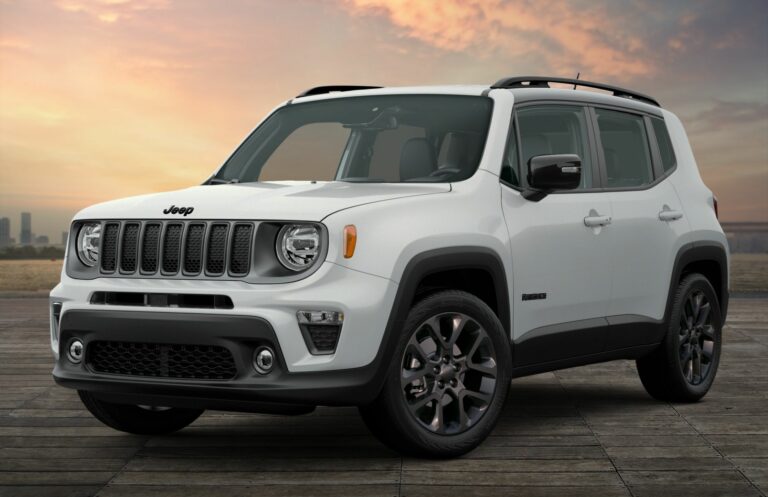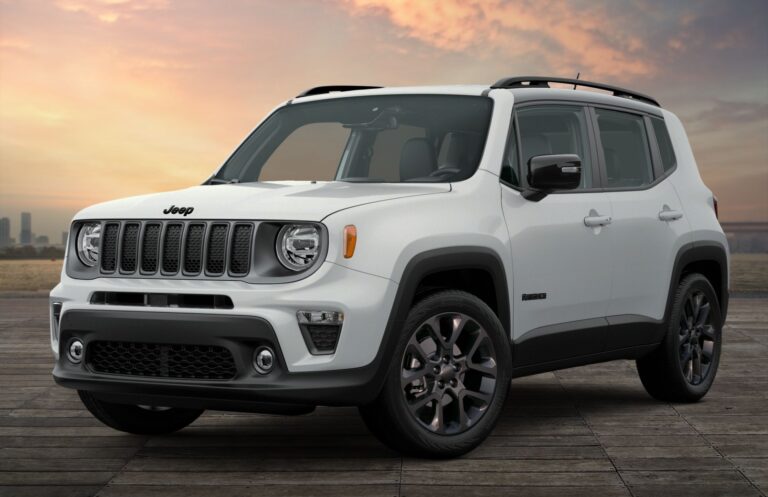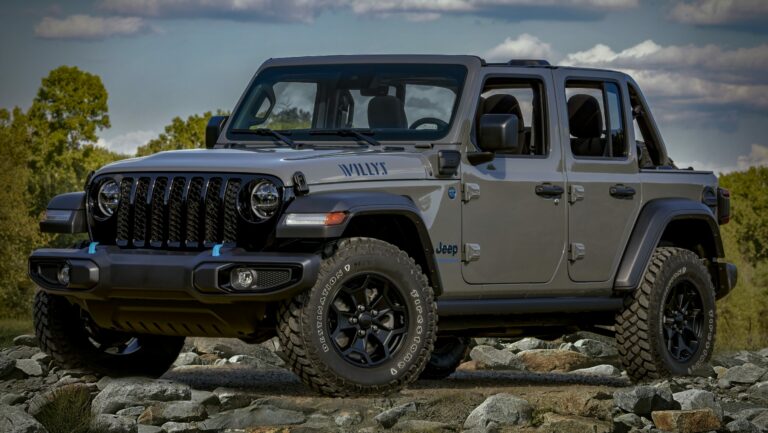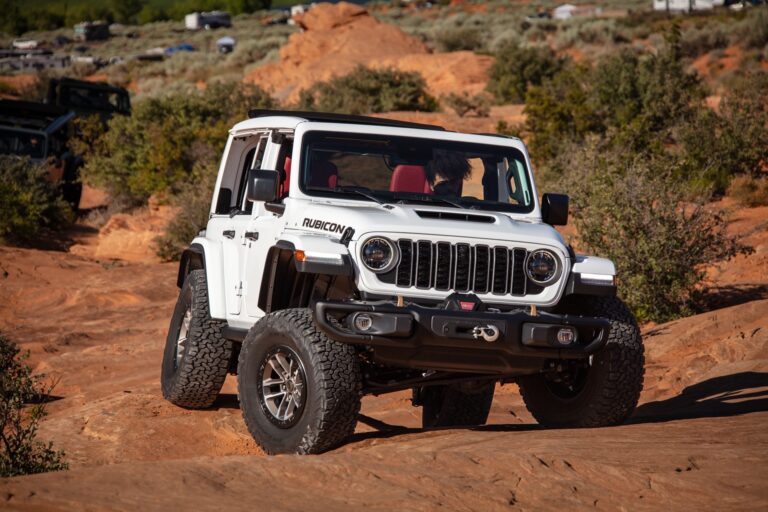1980s Jeep Grand Wagoneer For Sale: A Comprehensive Buyer’s Guide
1980s Jeep Grand Wagoneer For Sale: A Comprehensive Buyer’s Guide jeeps.truckstrend.com
The 1980s Jeep Grand Wagoneer stands as an undisputed icon of American automotive history. Long before the term "SUV" became ubiquitous, the Grand Wagoneer pioneered the concept of a luxurious, family-friendly vehicle with genuine off-road capability. For those seeking a blend of classic charm, rugged utility, and a distinct sense of nostalgia, a 1980s Jeep Grand Wagoneer for sale represents more than just a vehicle purchase; it’s an acquisition of a piece of automotive heritage. This guide will delve into everything you need to know about finding, evaluating, and owning one of these legendary machines.
The Enduring Appeal of the 1980s Grand Wagoneer
1980s Jeep Grand Wagoneer For Sale: A Comprehensive Buyer’s Guide
From its distinctive faux woodgrain paneling to its plush, comfortable interior, the 1980s Grand Wagoneer exudes a timeless appeal. Produced largely unchanged from 1963 until 1991, the SJ-platform Grand Wagoneer truly hit its stride in the 1980s, becoming a symbol of affluent suburban life and adventurous spirit. It seamlessly blended the go-anywhere capability of a traditional Jeep with the creature comforts expected of a luxury car, featuring power accessories, air conditioning, and often leather upholstery.
Under the hood, most 1980s models were powered by AMC’s robust 360 cubic inch (5.9L) V8 engine, paired with a reliable automatic transmission (initially the Chrysler TorqueFlite 727, later the 904). Its full-time Quadra-Trac four-wheel-drive system (or later Selec-Trac) provided confident traction in various conditions, making it equally adept at navigating snowy roads, towing a boat, or cruising to the country club. Today, the Grand Wagoneer’s unique blend of classic styling, V8 power, and utilitarian charm makes it highly sought after by collectors, enthusiasts, and anyone looking for a vehicle that truly stands out from the modern automotive landscape.
What to Look For When Buying a 1980s Jeep Grand Wagoneer
Purchasing a vintage vehicle like a 1980s Jeep Grand Wagoneer requires careful inspection and an understanding of common issues. Here are the critical areas to scrutinize:
1. Rust: The Grand Wagoneer’s Arch-Nemesis
Given their age and propensity for rust, this is often the most significant factor determining a vehicle’s value and the extent of necessary repairs.
- Frame: Inspect the entire frame, especially around suspension mounting points, crossmembers, and the rear leaf spring hangers.
- Body Panels: Pay close attention to rocker panels, lower door sections, wheel arches, and the tailgate. The tailgate is notorious for rusting from the inside out due to water ingress around the glass and trim.
- Floorboards: Check under the carpets for rust in the footwells, especially in the front.
- Roof: Look for bubbling around the drip rails and sunroof (if equipped).

2. Engine and Drivetrain
The AMC 360 V8 is generally reliable but can have its quirks.
- Engine: Check for oil leaks (common around the rear main seal, valve covers), excessive smoke from the exhaust (blue for oil, white for coolant), strange noises (ticking, knocking), and proper idle. Ensure it starts easily.
- Transmission: Listen for harsh shifts, slipping, or delayed engagement. Check the fluid level and color (should be reddish, not dark or burnt-smelling).
- Transfer Case/4WD System: Engage 4WD (if possible) and listen for unusual noises. Check for leaks around the transfer case and differentials. Ensure the vacuum lines for the front axle disconnect (on later models) are intact.
3. Interior Condition
The Grand Wagoneer’s interior is a major part of its appeal, but it’s prone to wear and tear.
- Upholstery: Inspect the leather or fabric seats for rips, tears, and excessive wear. The driver’s seat often shows the most damage.
- Headliner: Sagging headliners are almost universal in these vehicles due to foam degradation. While not mechanically critical, it’s a common repair.
- Dashboard: Look for cracks, especially near the defroster vents, due to sun exposure.
- Woodgrain Trim: Ensure the interior woodgrain is intact and not peeling or faded.
- Power Windows: These are notoriously problematic. Test every window multiple times. Issues often stem from old motors, regulators, or wiring.
- Air Conditioning: Confirm the A/C blows cold. Converting from R12 to R134a refrigerant is a common upgrade if it’s not working.
4. Electrical Systems
Beyond the power windows, many electrical components can be finicky.
- Gauges: Ensure all gauges (fuel, temp, oil pressure, voltmeter) are functional.
- Lights: Test all exterior and interior lights.
- Radio: Original radios often don’t work or are outdated, but confirm power.
- Wipers: Test both speeds and the washer fluid dispenser.
5. Suspension and Steering
- Bushings and Shocks: Check for worn bushings (leading to clunks or squeaks) and leaky or worn shocks.
- Leaf Springs: Inspect for broken leaves or sagging, especially in the rear.
- Steering: Look for excessive play in the steering wheel, which could indicate a worn steering box, tie rod ends, or ball joints.
6. Documentation
A well-documented vehicle with service records is always preferable. A clear title is essential.
Where to Find a 1980s Grand Wagoneer For Sale
The market for classic vehicles has never been more accessible. Here are common places to find a 1980s Jeep Grand Wagoneer for sale:
- Online Auction Sites: Bring a Trailer (BaT) and eBay Motors are popular for well-presented, often higher-end examples.
- Classic Car Marketplaces: Hemmings, ClassicCars.com, and Autotrader Classics list vehicles from private sellers and dealerships.
- Specialized Forums and Facebook Groups: Dedicated Grand Wagoneer owner communities are excellent resources for finding vehicles, parts, and advice. Examples include "Full Size Jeep" forums and various Facebook groups.
- Local Classic Car Dealerships: Some dealerships specialize in vintage SUVs and may have well-restored examples.
- Word of Mouth: Let friends and family know you’re looking; you never know what’s sitting in a barn or garage nearby.
- Auctions: Live and online general automotive auctions can sometimes turn up hidden gems, but require careful pre-bidding inspection.
Understanding Condition Levels and Pricing
The price of a 1980s Jeep Grand Wagoneer varies wildly depending on its condition, originality, and restoration level. It’s crucial to understand these categories when setting your budget.
| Condition Level | Price Range (Approximate USD) | Description |
|---|---|---|
| Project/Parts Car | $5,000 – $15,000 | Requires extensive mechanical and body work. Likely has significant rust, non-running engine, or major electrical issues. Suitable for skilled DIY enthusiasts or as a donor vehicle. |
| Driver Quality | $15,000 – $30,000 | Functional and runs, but has cosmetic flaws (minor rust, faded paint, worn interior) and/or mechanical issues that need attention (leaks, A/C not working, minor electrical gremlins). Can be driven as-is but needs ongoing investment. |
| Good Original/Survivor | $30,000 – $50,000 | Well-maintained, mostly original condition with minimal rust. Paint may be original or an older repaint that still looks good. Interior is largely intact with minor wear. Mechanically sound, but may have minor age-related quirks. |
| Restored/Show Quality | $50,000 – $100,000+ | Meticulously restored or exceptionally well-preserved examples. Fresh paint, re-upholstered interior, rebuilt engine/drivetrain, and all systems fully functional. Suitable for show events or discerning collectors. |
Note: Prices are highly dependent on market demand, specific year (later 80s models often command a premium for their refinements), mileage, and geographic location.
The Ownership Experience: Challenges & Solutions
Owning a 1980s Grand Wagoneer is a rewarding experience, but it comes with its unique set of challenges.
Challenges:
- Fuel Economy: Expect single-digit miles per gallon (8-12 MPG is common). These V8 engines are thirsty.
- Parts Availability: While many mechanical parts (engine, transmission components) are readily available thanks to their shared use across other AMC/Jeep vehicles, specific trim pieces, interior components, and unique electrical parts can be difficult and expensive to source.
- Maintenance: These are older vehicles that require consistent maintenance. Finding a mechanic familiar with vintage American vehicles can be a challenge.
- Common Issues: Be prepared to address recurring issues like power window failures, A/C system problems, and the ongoing battle against rust.
Solutions:
- Budget for Fuel: Factor high fuel costs into your ownership budget.
- Join Communities: Engage with online forums and Facebook groups. These communities are invaluable for sourcing parts, getting advice, and finding reputable mechanics or DIY solutions.
- Find a Specialist Mechanic: Seek out shops specializing in classic American cars or Jeeps. If you’re mechanically inclined, a service manual is your best friend.
- Proactive Maintenance: Don’t wait for things to break. Regular fluid changes, inspections, and addressing small issues before they become major problems will save you money and headaches in the long run.
- Rust Prevention: If you acquire a rust-free or minimally rusted example, invest in undercoating and regular cleaning to prevent future corrosion.
Practical Advice and Actionable Insights
- Set a Realistic Budget: Beyond the purchase price, budget for immediate repairs, deferred maintenance, and potential future restorations. A good rule of thumb is to set aside 20-30% of the purchase price for initial sorting out, especially for driver-quality vehicles.
- Get a Pre-Purchase Inspection (PPI): Unless you are an experienced mechanic specializing in vintage Jeeps, always hire a qualified independent mechanic to perform a thorough PPI. This can save you from costly surprises down the road.
- Research Specific Years: While the 1980s Grand Wagoneers are broadly similar, there were minor changes in engines, transmissions, and features throughout the decade. For example, later models (late 80s) often featured slightly more refined interiors and electronic fuel injection (in 1991), which can offer slightly better drivability.
- Consider Your Intended Use: Are you looking for a daily driver, a weekend cruiser, or a show queen? Your intended use will dictate the condition level you should pursue and the budget you need.
- Don’t Rush: Take your time. There are many Grand Wagoneers for sale. Wait for the right one that fits your budget and expectations.
Frequently Asked Questions (FAQ)
Q: Are 1980s Grand Wagoneers reliable?
A: When well-maintained, they can be surprisingly reliable. However, as 30-40 year old vehicles, they will require more consistent attention and repair than a modern car. Expect quirks and occasional issues.
Q: What is the fuel economy like?
A: Poor. Most 1980s Grand Wagoneers with the AMC 360 V8 will get between 8-12 miles per gallon, depending on driving conditions and maintenance.
Q: Are parts hard to find?
A: Mechanical parts for the engine, transmission, and drivetrain are generally available due to their commonality across other AMC/Jeep models. Body panels and specific interior trim pieces can be harder to source and may require searching specialized vendors or salvage yards.
Q: Can a 1980s Grand Wagoneer be a daily driver?
A: It can, but it requires dedication and a higher budget for maintenance and fuel. Many owners use them as secondary vehicles or weekend cruisers rather than primary daily transportation.
Q: Which year is the best to buy in the 1980s?
A: There’s no single "best" year, as the core vehicle remained largely consistent. Later 1980s models (e.g., 1989-1990) often had minor refinements, including improved interiors and some electrical updates. The 1991 model, being the last year, often commands a premium. Focus more on overall condition than a specific year within the decade.
Q: What should I budget for annual maintenance?
A: For a well-sorted driver-quality vehicle, budgeting $1,000-$3,000 annually for routine maintenance, minor repairs, and unexpected issues is a reasonable starting point. This figure can be much higher for project vehicles or those needing significant work.
Conclusion
The 1980s Jeep Grand Wagoneer remains a captivating blend of classic American styling, rugged capability, and nostalgic luxury. For those venturing into the market for a 1980s Jeep Grand Wagoneer for sale, the journey promises to be as rewarding as the destination. By understanding the common pitfalls, knowing what to look for, and approaching the purchase with realistic expectations, you can secure a cherished piece of automotive history. Owning a Grand Wagoneer isn’t just about driving; it’s about embracing a lifestyle, joining a passionate community, and experiencing the unique charm of an era-defining vehicle that continues to turn heads wherever it goes.





